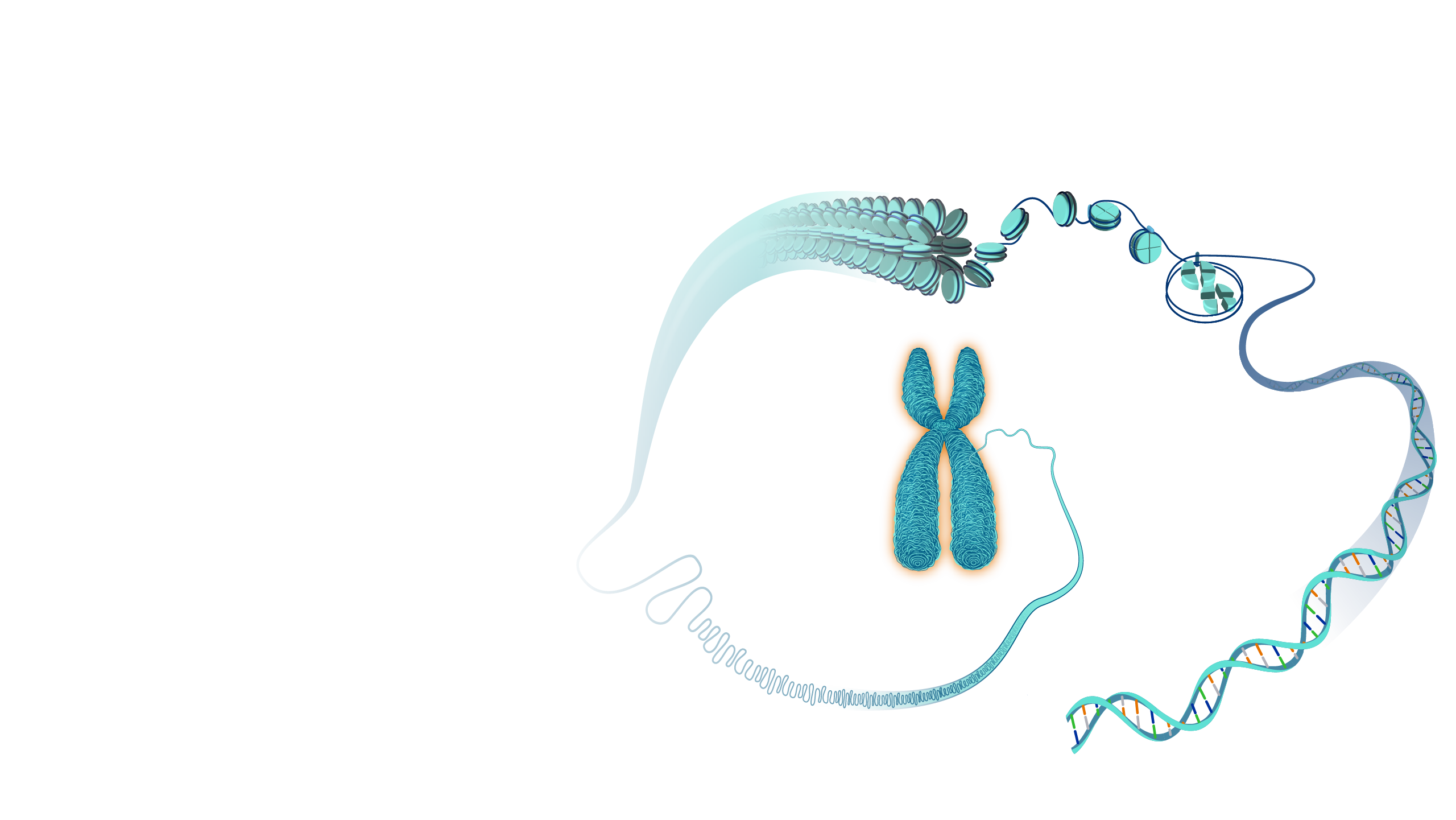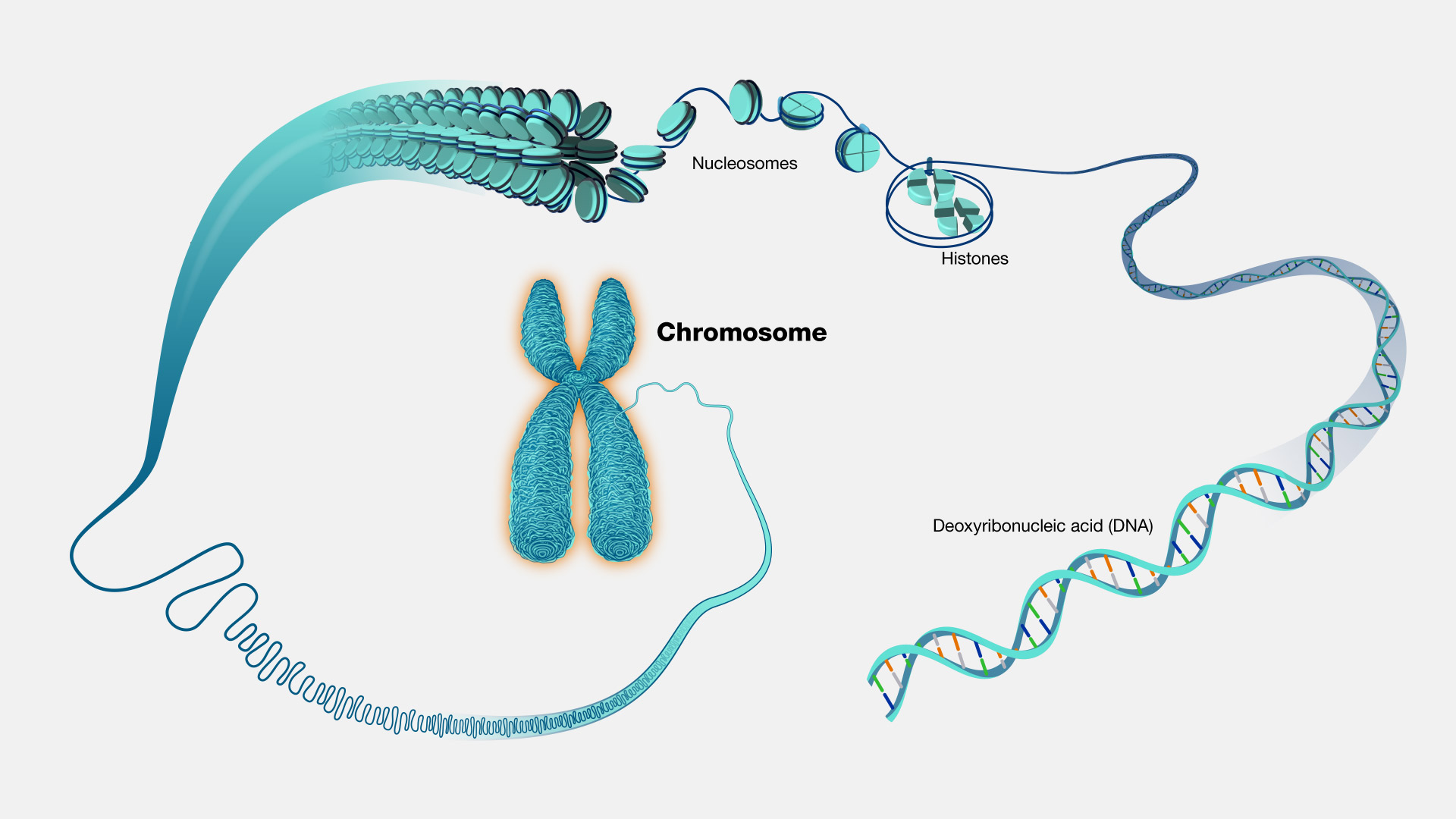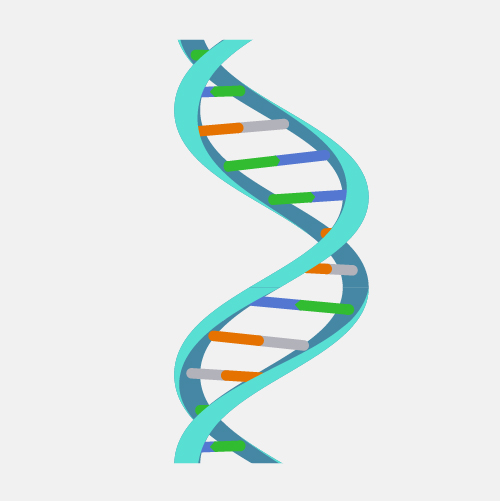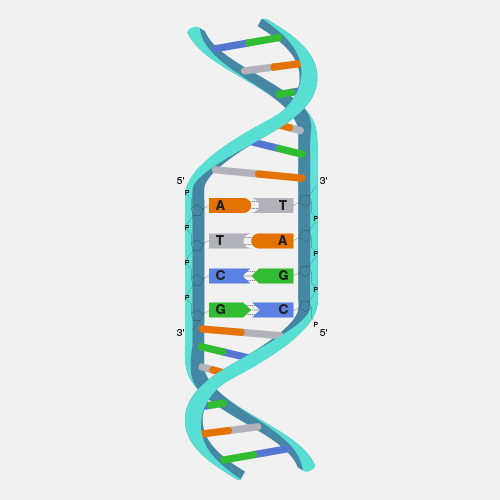
Chromosome
Definition
Chromosomes are threadlike structures made of protein and a single molecule of DNA that serve to carry the genomic information from cell to cell. In plants and animals (including humans), chromosomes reside in the nucleus of cells. Humans have 22 pairs of numbered chromosomes (autosomes) and one pair of sex chromosomes (XX or XY), for a total of 46. Each pair contains two chromosomes, one coming from each parent, which means that children inherit half of their chromosomes from their mother and half from their father. Chromosomes can be seen through a microscope when the nucleus dissolves during cell division.

Narration
Chromosomes vary in number and shape among living organisms. Most bacteria have one or two circular chromosomes. Humans, along with other animals and plants, have linear chromosomes . In fact, each species of plants and animals has a set number of chromosomes. A fruit fly, for example, has four pairs of chromosomes, while a rice plant has 12 and a dog, 39. In humans, the twenty-third pair is the sex chromosomes, while the first 22 pairs are called autosomes. Typically, biologically female individuals have two X chromosomes (XX) while those who are biologically male have one X and one Y chromosome (XY). However, there are exceptions to these rules. Chromosomes are also different sizes. The human X chromosome is about three times larger than the human Y chromosome, containing about 900 genes, while the Y chromosome has about 55 genes. The unique structure of chromosomes keeps DNA tightly wound around spool-like proteins, called histones. Without such packaging, DNA molecules would be too long to fit inside cells! For example, if all of the DNA molecules in a single human cell were unwound from their histones and placed end-to-end, they would stretch 6 feet.





